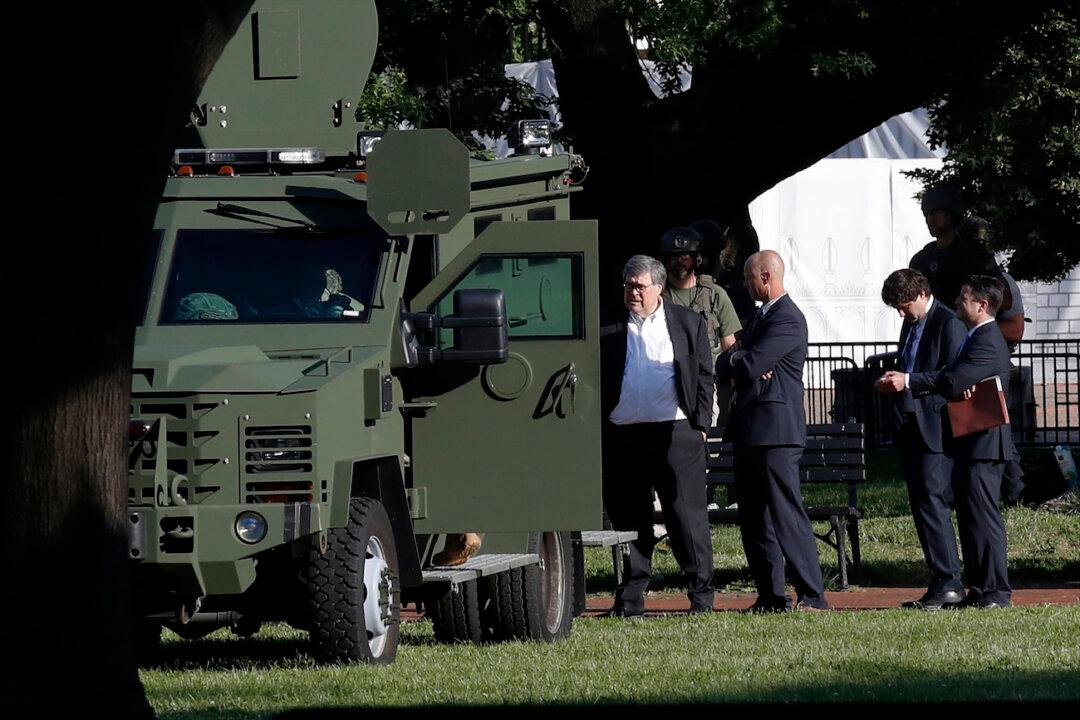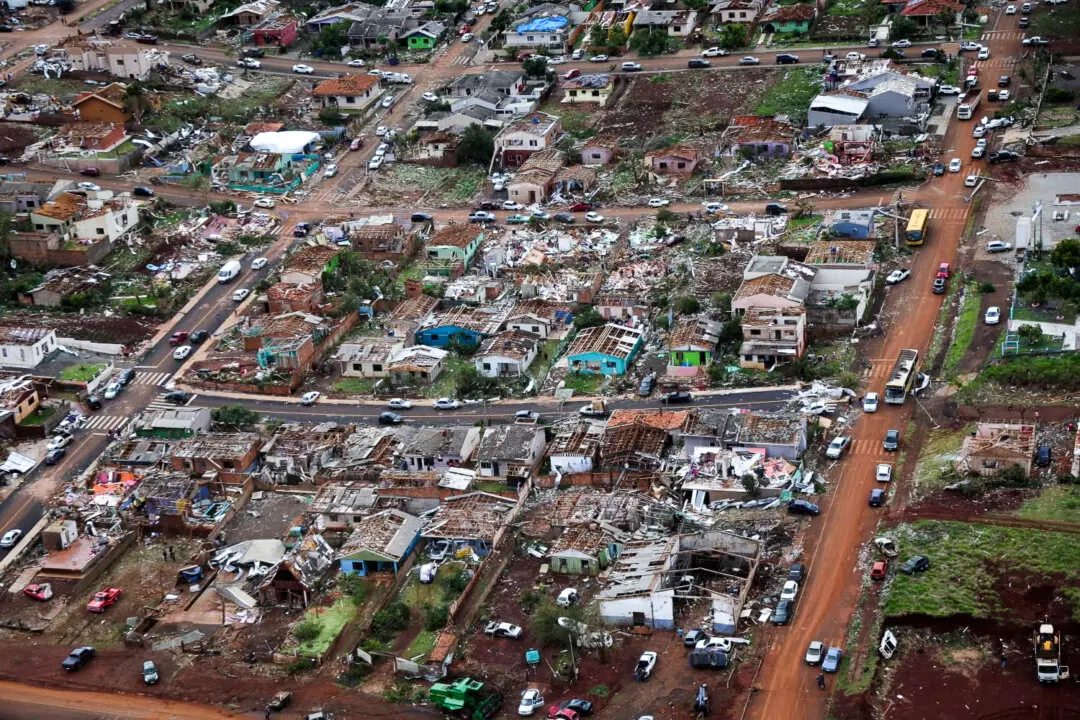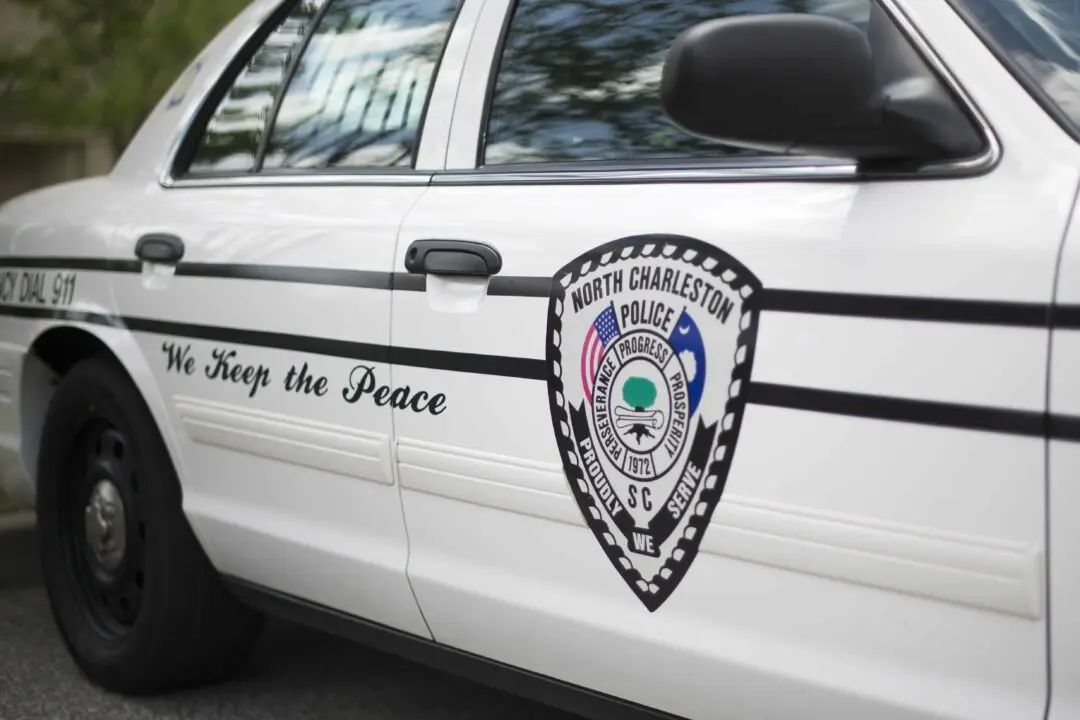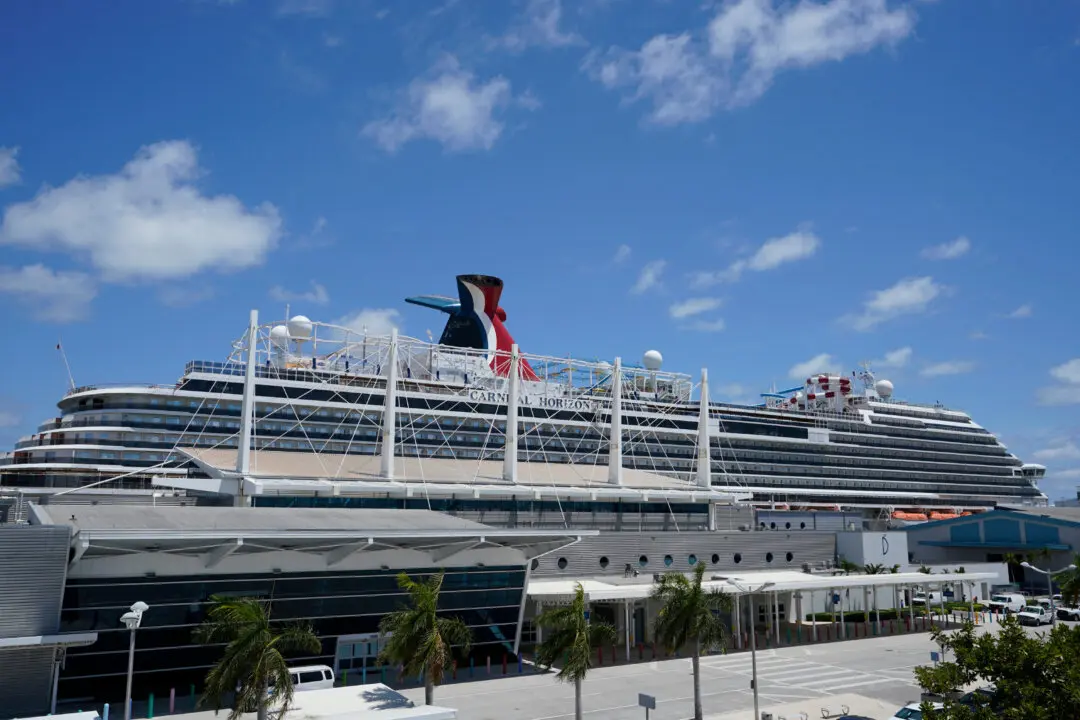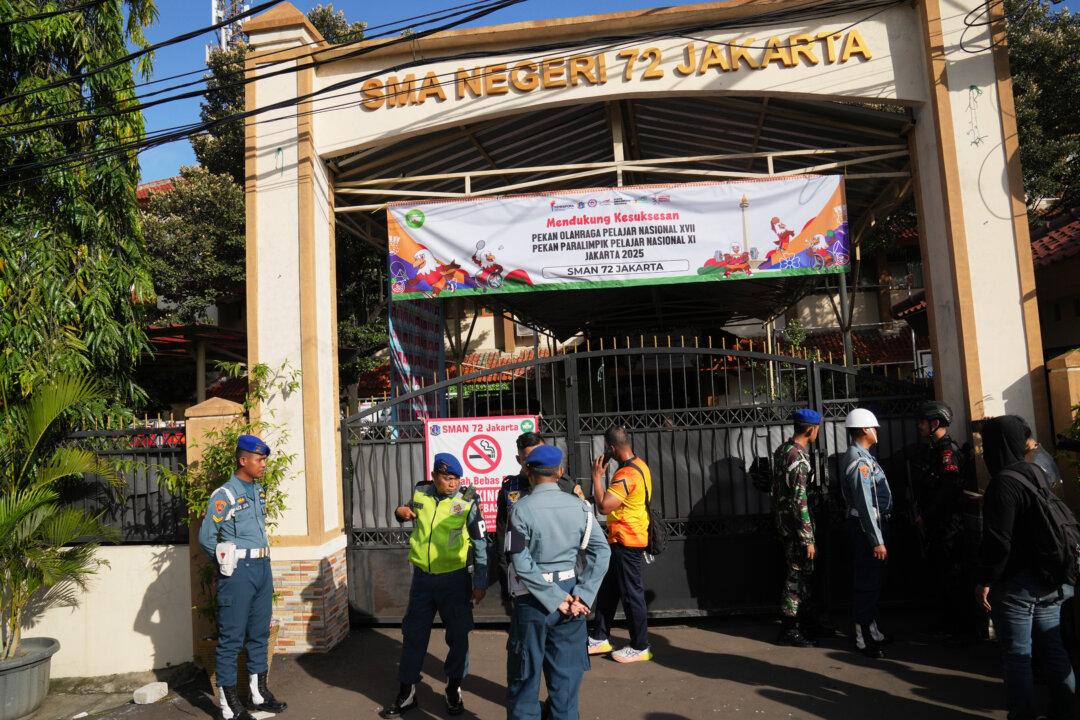WASHINGTON—Attorney General William Barr says law enforcement officers were already moving to push back protesters from a park in front of the White House when he arrived there Monday evening, and he says he did not give a command to disperse the crowd, though he supported the decision.
Barr said in an interview with The Associated Press that both he and U.S. Park Police were in agreement on the need to push back the security perimeter.
